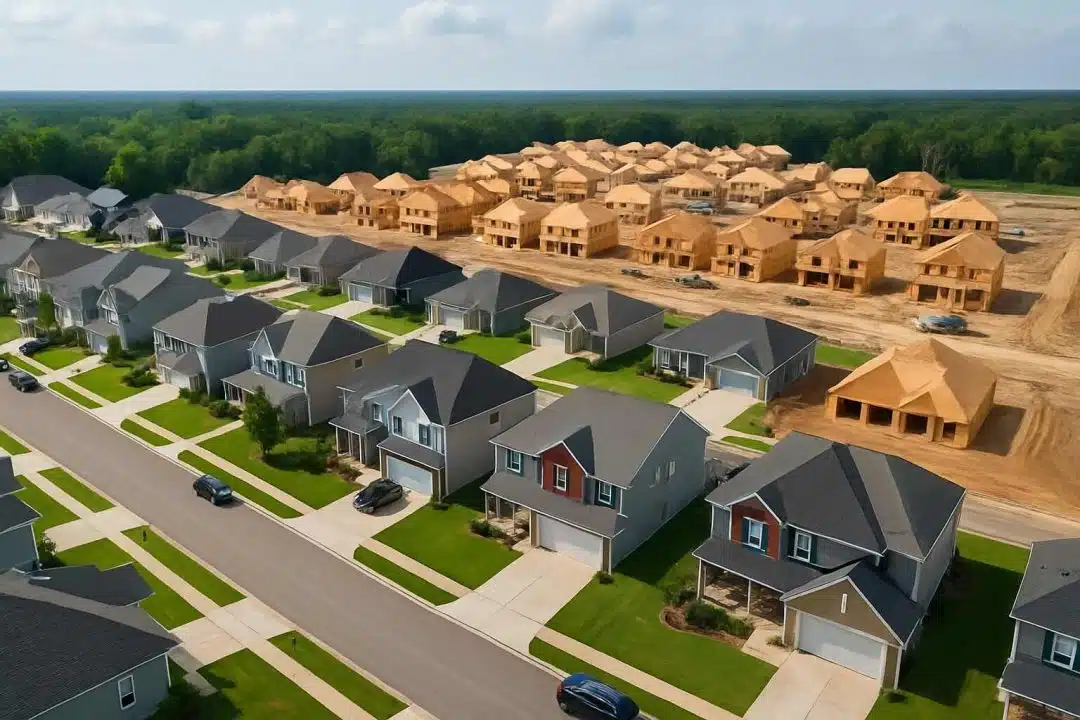
The U.S. housing market is undergoing a major shift in 2025, with sellers now outnumbering buyers by the widest margin in over a decade. The imbalance is expected to drive home prices down and empower buyers with more negotiating power.
Buyer’s market reaches historic levels
New data from Redfin shows that there are approximately 1.94 million home sellers currently active in the U.S. market compared to just 1.45 million buyers. This 33.7% gap—nearly 500,000 more sellers than buyers—is the largest recorded since Redfin began tracking the metric in 2013. For comparison, sellers outnumbered buyers by just 6.5% a year ago. Two years ago, buyers actually outnumbered sellers.
The consequences of this shift are clear. With more listings than interested purchasers, home prices are expected to decline. Redfin forecasts a 1% year-over-year drop in home prices by the end of 2025. This signals a major change after years of steady appreciation and competitive bidding wars.
Why sellers are flooding the market
Several converging factors are leading to the growing number of home listings:
- High mortgage rates: The average 30-year fixed mortgage rate was 6.73% in April 2025. While this is below the 2023 peak of nearly 8%, it’s still well above pre-pandemic lows and deterring many would-be buyers.
- Economic uncertainty: Concerns about inflation, tariffs, job stability, and overall financial conditions are making Americans hesitant to make large purchases, including homes.
- The end of the mortgage rate lock-in effect: Homeowners who secured ultra-low mortgage rates during the pandemic are finally putting their homes on the market due to life changes such as job relocations, divorces, or return-to-office mandates. The fear of taking on a higher rate has faded, and practical necessity is pushing more homes onto the market.
Sellers hold out hope—but may face a correction
Despite these trends, many sellers are still pricing their homes as if it’s 2021 or 2022. Redfin’s senior economist Asad Khan notes that many sellers are slow to adjust to new market conditions. This has resulted in a growing share of stale listings. In April, 44% of homes had been on the market for 60 days or more—the highest level for any April since 2020.
Sellers may continue to resist lowering prices, especially if they purchased near the peak and are hoping to break even. However, as inventory builds and foot traffic drops, price reductions are becoming more common.
Florida and Texas lead the nation in buyer’s markets
The imbalance is most pronounced in several Sun Belt metros. Miami tops the list, with 197.7% more sellers than buyers. West Palm Beach (182%), Fort Lauderdale (179.3%), and Jacksonville (119.5%) also rank among the most imbalanced.
These areas saw a surge in homebuilding during the pandemic. Now, oversupply is meeting diminished demand, pushing the balance of power squarely into buyers’ hands.
In Austin, Texas—a city that saw explosive growth during the pandemic—there are 124% more sellers than buyers. The median home price there has already dropped 3% compared to last year.
Across the top 10 buyer’s markets, home prices rose just 0.5% on average in April, compared to a 6.9% gain in seller’s markets. This further underscores how the imbalance is impacting price trends across the country.
Condos hit hardest in the shifting market
The condo market is even more skewed than the single-family home market. Redfin estimates there are 259,137 condo sellers versus 141,223 buyers—an 83.5% surplus. Many condo owners are rushing to sell due to rising HOA fees, special assessments, and high insurance costs, especially in states like Florida.
Condo prices are reflecting this pressure. In April, the median sale price for a U.S. condo rose only 0.4% year over year, compared to a 1.5% increase for single-family homes.
This trend suggests that buyers looking for entry-level options or urban properties may find more negotiating power and value in the condo market in the months ahead.
Balanced and seller’s markets still exist—but they’re rare
Not all metro areas are buyer’s markets. According to Redfin, only seven of the 50 largest U.S. metros currently qualify as seller’s markets. The strongest is Newark, New Jersey, where there are 47% fewer sellers than buyers. Newark’s median sale price rose 12.2% year over year in April—the highest price gain in the nation.
Balanced markets include St. Louis, Kansas City, Cincinnati, and Boston. These areas tend to have relatively stable inventory and demand, making them less volatile during national housing shifts.
In contrast, metros like Phoenix, Las Vegas, and Tampa are firmly in buyer’s market territory, reflecting a broader geographic divide: buyer’s markets are more common in the South and West, while balanced and seller’s markets are concentrated in the Midwest and Northeast.
What homebuyers and sellers should expect next
For sellers, the message is clear: pricing realistically is key. Overpricing can lead to months on the market, which in turn forces eventual price cuts and damages perceived value. Redfin agents are recommending cosmetic updates and competitive pricing strategies to attract today’s cautious buyers.
For buyers, the current landscape offers opportunities. While affordability remains a challenge—especially with high mortgage rates—more inventory, longer time on market, and an increase in seller concessions are giving qualified buyers more leverage than they’ve had in years.
Looking ahead
Redfin’s analysts suggest the market could continue to cool throughout summer and into fall. Historically, price growth slows a few months after buyer-seller imbalances reach their peak. With fewer buyers entering the market and more sellers listing homes, price drops could accelerate—especially in overbuilt markets like Florida, Texas, and Arizona.
The last time prices declined year-over-year was in 2023. If current trends hold, 2025 could mark another correction period in the post-pandemic housing cycle.
